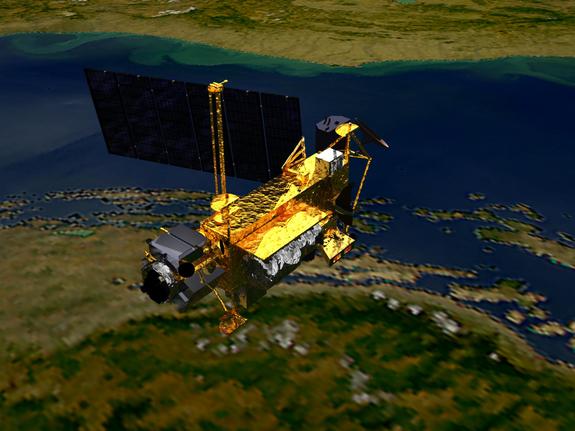
Custom Search
NASA’s 6.5 ton defunct space satellite now in death plunge

NASA space junk experts have refined the forecast for the anticipated death plunge of a giant satellite, with the U.S. space agency now predicting the 6 1/2-ton climate probe will plummet to Earth around Sept. 23, a day earlier than previously reported. The defunct bus-size spacecraft is NASA’s Upper Atmospheric Research Satellite (UARS), which launched in 1991 and was shut down in 2005 after completing its mission. The satellite was expected to fall to Earth sometime this year, with experts initially pegging a weeks-long window between late September and early October, then narrowing it to the last week of this month. “Re-entry is expected Sept. 23, plus or minus a day. The re-entry of UARS is advancing because of a sharp increase in solar activity since the beginning of this week,” NASA officials wrote in a status update today (Sept. 16). The projection is a day earlier than a previous forecast released by NASA yesterday. NASA spokeswoman Beth Dickey confirmed with SPACE.com earlier today that the reason UARS is expected to fall early in its re-entry window is because of the sharp uptick in solar activity. Solar effects from the sun can create an extra drag on satellites in space because they can heat the Earth’s atmosphere, causing it to expand, agency officials have said. NASA officials expect the UARS satellite to fall over a region somewhere between the latitudes of northern Canada and southern South America, which leaves a vast swath of the world open as a possible re-entry point. About 75 percent of the Earth’s surface is covered in water, which makes an ocean splashdown likely, NASA and experts have said. NASA and the Joint Space Operations Center of U.S. Strategic Command at Vandenberg Air Force Base, Calif., are keeping a close watch on the falling satellite, but will only be able to pinpoint its actual crash zone to within about 6,000 miles (10,000 km) about two hours before re-entry. As of Thursday, the UARS satellite was flying in an orbit of between 143 and 158 miles (230 to 255 km) above Earth. That orbit is dropping lower each day, NASA officials said. NASA has advised the public not to touch any debris that may reach the surface, should it be discovered. Instead, the space agency says that anyone who finds satellite debris should contact their local law enforcement agency. –Space.com
Sept. 16, 2011
